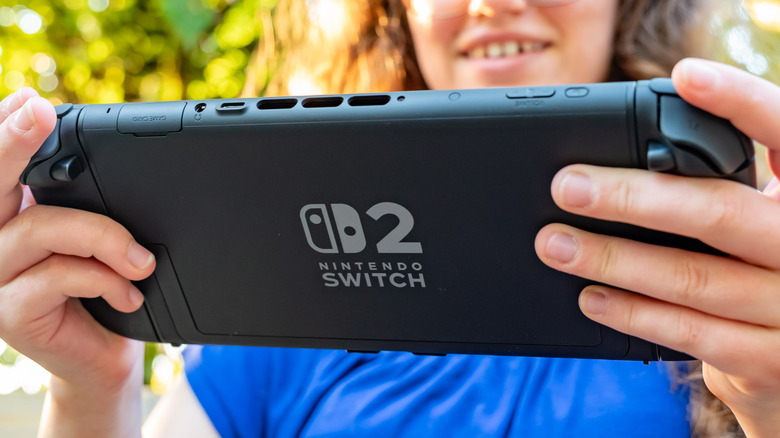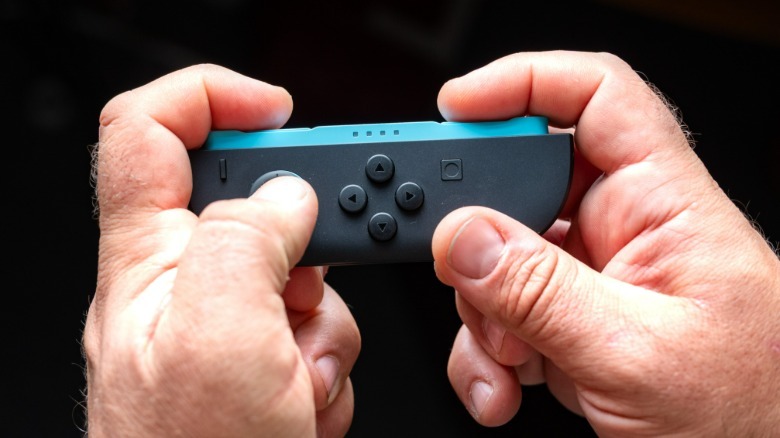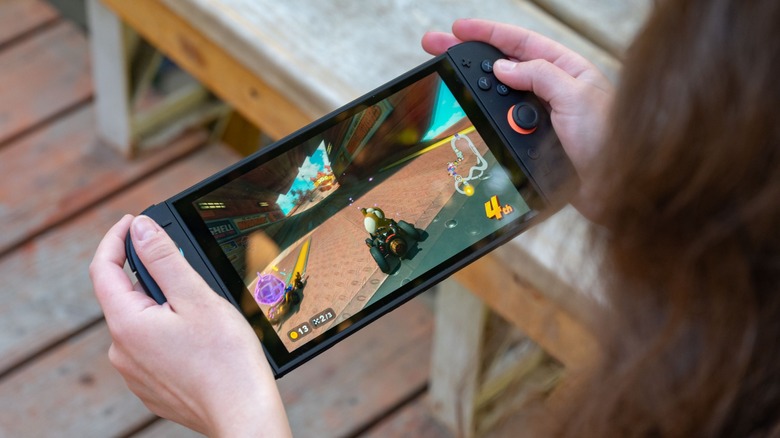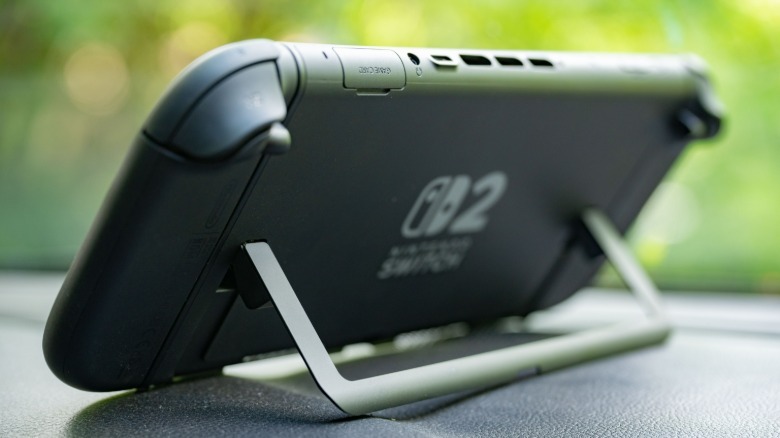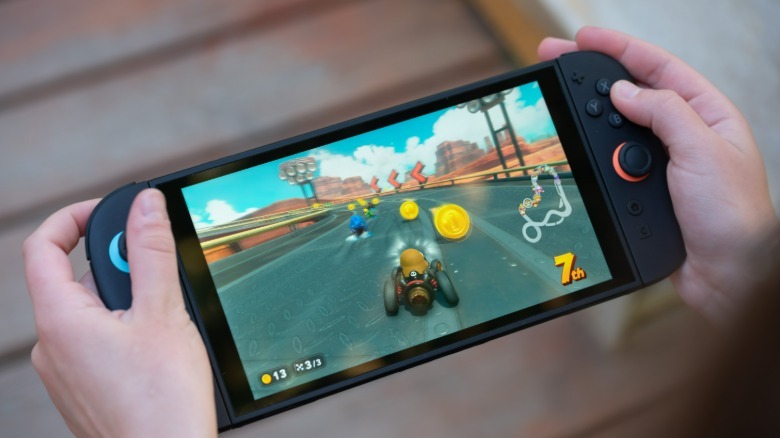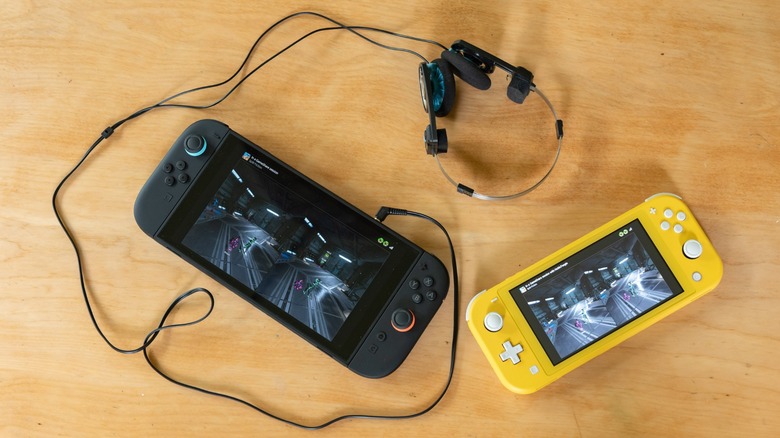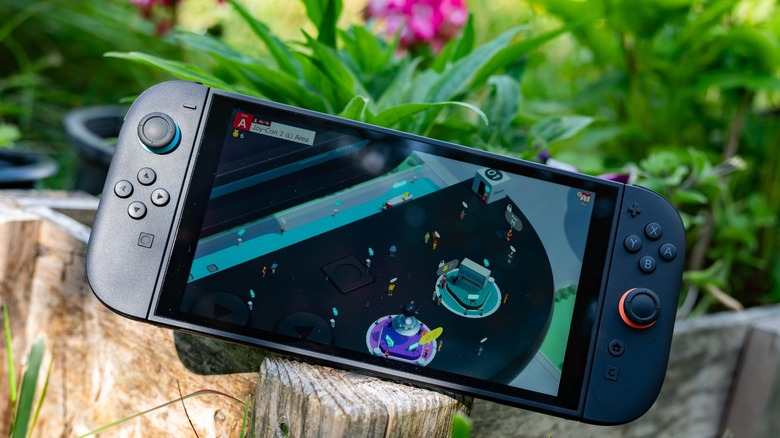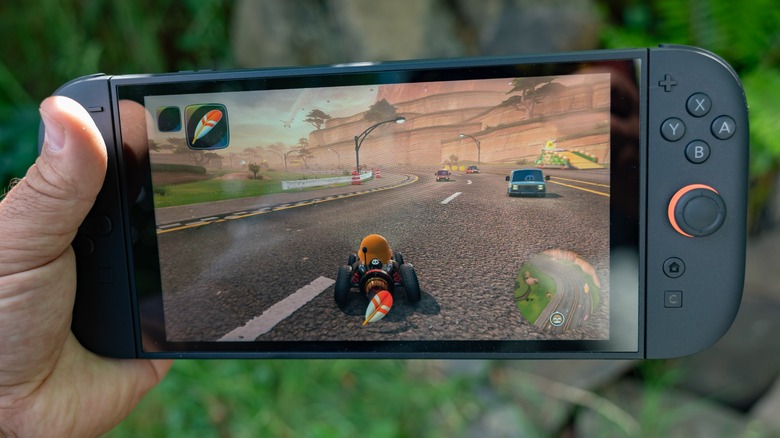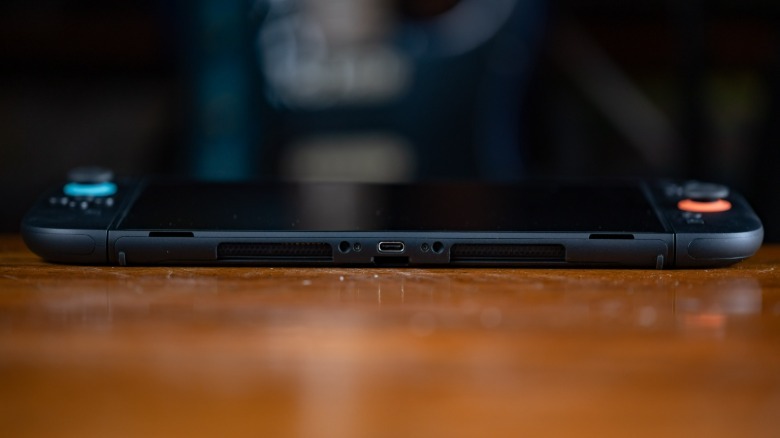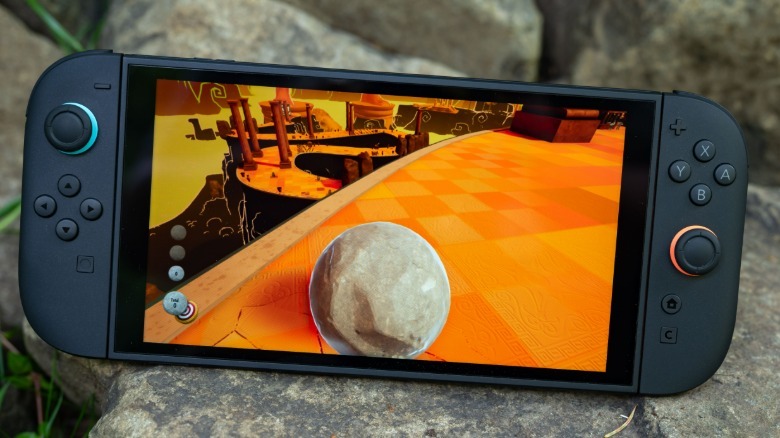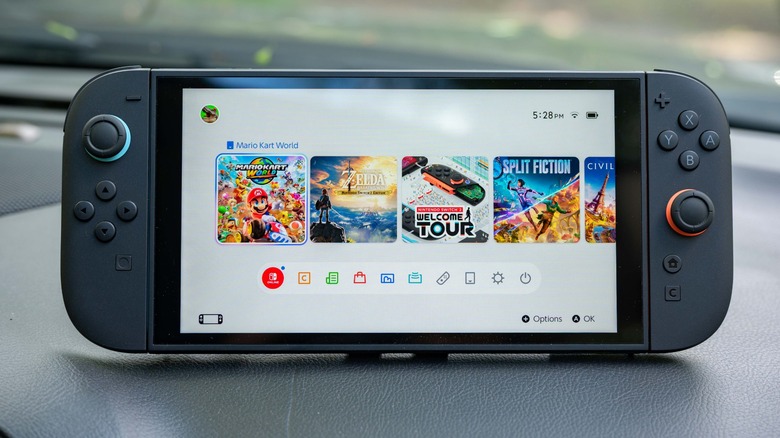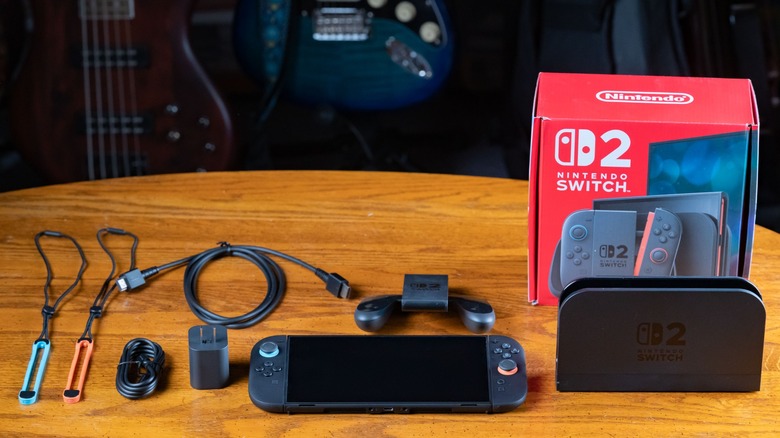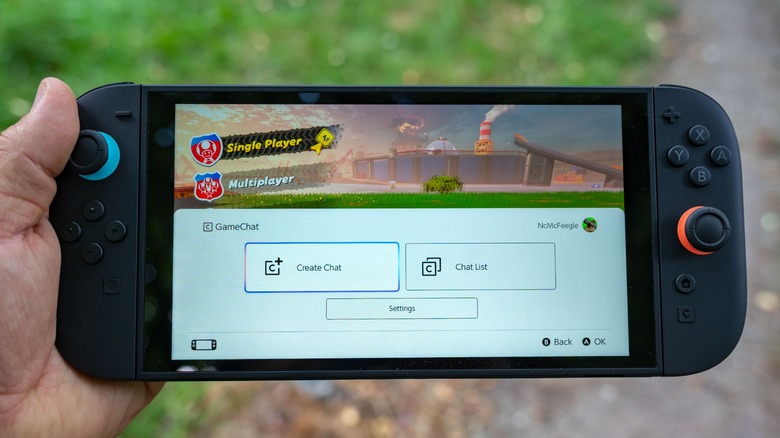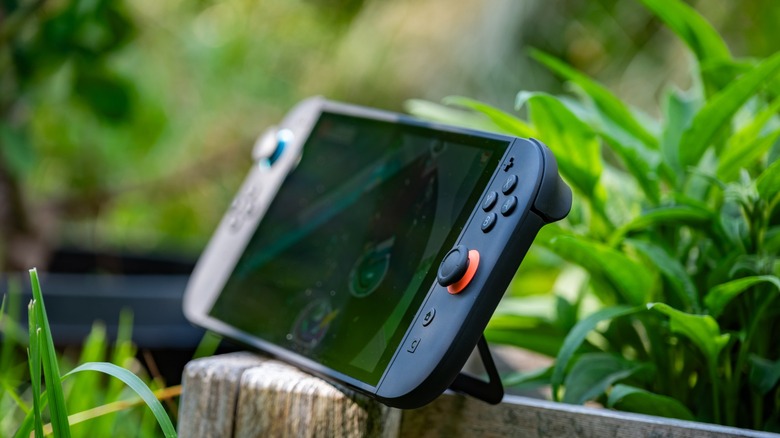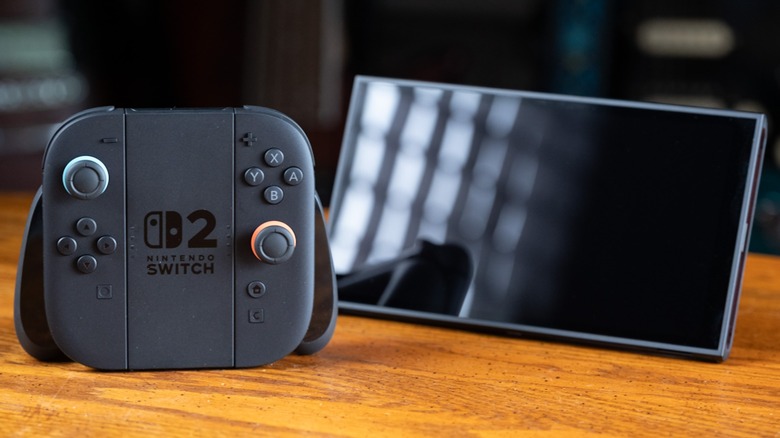Nintendo Switch 2 Review: A Worthy Successor, But Is It Worth The Price?
We may receive a commission on purchases made from links.
The original Nintendo Switch really was a paradigm shift for console gaming, kickstarting a new era of gaming handhelds that blurred the line between traditionally limited portable gaming experiences and full fledged living room consoles. That was way back in 2017 however, and since then competition has grown increasingly fierce. The Nintendo Switch 2 enters an arena it no longer has all to itself, and it will need to deliver a truly next generation experience to stay on top.
To accomplish this, the Switch 2 is now significantly more powerful than its predecessor, and has a host of new tricks and upgrades baked into it. I for one was very excited to try out the new ability of the joycons to function like computer mice, and the new magnetic attachment system for the joycons could be a major improvement. With that said, is there enough new here to entice original Switch owners to upgrade, and to compete with powerful modern PC handhelds?
Nintendo provided the Switch 2 for the purposes of this review. Video games were provided by Nintendo and third party publishers to facilitate testing.
A familiar, but massively upgraded design
Fundamentally, the Switch 2 is very similar to the original Nintendo Switch, with the main chassis being essentially a tablet, plus two detachable controllers. However, when I finally got the Switch 2 in-hand, it immediately felt distinctly new and different. Perhaps most notably, the new magnetic attachment mechanism for the joycons is much to be preferred compared to the rail system of the original Switch joycons. This new system seems both more secure, durable, and quicker and easier to operate. The next most noticeable thing is the larger display.
It's important to note that while the design of the joycons is new, they unfortunately don't use Hall effect joysticks, and so stick drift remains a lurking boogeyman. Time will tell how common this will be, though so far I haven't experienced it, and it never occurred with my old Switch Lite, but it is nonetheless a concern. The good news is that the Joycons can themselves be replaced (albeit at for a steep $94.99), and it is possible to use the Switch 2 with third party controllers, so it's not the end of the world if you do run into stick drift.
Bright and beautiful display
The touchscreen display is quite spectacular. It's 1080p, supports HDR, and has a refresh rate of up to 120 Hz. I was initially skeptical since the display wasn't OLED, and while it would be preferable, the high refresh rate and overall excellent performance of the Switch 2 display make it hard to fault the device in this regard. It's vivid and beautiful, and bright enough that I was easily able to play outside in the backyard on a sunny day.
I really like the new built-in kickstand, which is a big improvement over that featured in the original switch. The built in speakers are also surprisingly powerful, delivering far greater performance than I'd expect in such a thin and light device. Speaking of which, the Switch 2 is significantly slimmer than other handheld gaming devices in the space, and I'm happy to report that I find it unexpectedly comfortable, despite my large hands. You also get a USB-C port on the top and bottom, which is great to see, plus a headphone jack. Additionally, the system supports bluetooth headphone connectivity.
Mario Kart World is a lot of fun
Full disclosure, I've never been a big Mario fan, and I have very little experience with past Mario Kart titles. With that said, Mario Kart World is an absolute blast, and playing it splitscreen with my brother and sister really brought me back to my childhood where split screen games and LAN parties were among our favorite activities. Being able to plonk the Switch 2 down on a table wherever you happen to be and hand someone else one of the two joycon controllers for a round of Mario Kart World is awesome, and for me a really nostalgic experience.
The game itself has a mountain of content to offer, including a free roam mode in addition to a variety of race modes, online multiplayer (which can be played by two people on a single console in split screen mode), and direct wireless multiplayer between Switch 2 consoles. The 24 player races are impressive and chaotic, and it even manages to be fun for solo play. Environments are impressive, with elaborate courses replete with shortcuts, hazards, ramps to jump from, and of course all the power ups you'd expect. The way your kart transforms automatically into a boat when you hit the water is really cool, and some of the tracks are absolutely mind-bending to look at.
If you're picking up a Switch 2, I'd definitely recommend purchasing the bundle Mario Kart World, as it is both a key reason to own the Switch 2 in the first place, and is the only way to get the game at a discount from its steep standalone asking price.
Split Fiction is well suited to the Switch 2
Being a two person co-op experience, Split Fiction was an ideal test of a console which is so focused on such shared experiences. Since this game requires two full controllers rather than split joycons, I used the Switch's Game Share feature to enable a friend to play with me on my old Switch Lite. This is a pretty cool way to get some use out of your old Switch hardware, though we did encounter some latency issues with this setup.
The game itself seems to be good fun, and I particularly enjoyed the spaceship battle where one player flies the ship and the other mans a turret. However, I didn't get to play very far in, given the available time. Visually, it can be quite fantastic at times, and if the two player puzzles grow more complex later on, it could be quite an engaging co-op experience. I will say, though, that for a game about writers, the actual writing in the game is somewhat cringe-worthy. If you can tolerate that and the slightly wooden voice acting, there's a lot of fun to be had here.
Welcome Tour should have been included for free
The other game Nintendo provided to test with the Switch 2 was Nintendo Switch 2 Welcome Tour. While this is a very in-depth tutorial on the features of the Switch 2, that's all it really is: a tutorial, one you have to pay for. Yes, it's just ten bucks, but I still remember how much fun I had with Wii Sports back in the day, and that was included for free with the Wii. Welcome Tour is not Wii Sports. It's not bad by any means, and in fact I had quite a good time playing some of the mini games and demos, but they are all very shallow and don't offer hardly any replay value.
What's worse, the game demands that you seek out numerous hidden informational signage in order to progress from one area to another. All these signs do is tell you what various parts of the console are. I had completed all the mini games and demos in the first area, but was stuck running back and forth trying to get the prompt to trigger to discover these signs, and by the time I'd found them all I found my interest in playing more of the game had waned considerably.
Look, I'm clearly not the intended demographic for this game. I'm sure kids will love it, and it will help many people learn the ins and outs of the system. I would not have a harsh thing to say about it if it was an entirely free pack-in with the console. However, by charging for Welcome Tour, Nintendo has opened it up to criticism.
Runs cool and features impressive battery life
The overall performance of the Switch 2 is really quite remarkable given its slim size, and I'm sure that the current range of games available for it is only scratching the surface of the graphical performance this thing is capable of. Games load quickly from its 256GB of internal storage, which is thankfully expandable via fast MicroSD Express cards. It may seem a small thing, but Nintendo's support for MicroSD Express cards in the Switch 2 is a big deal, as it should help this high performance format achieve more widespread adoption. A Samsung 256GB MicroSD Express from Nintendo will set you back $59.99 on BestBuy.
What really surprised me is that the Switch 2 really doesn't seem to heat up at all, to the point where I rarely noticed the warmth even during long gaming sessions. Speaking of long gaming sessions, the Switch 2 can run for an awfully long time without needing to be plugged back in. I'm able to typically get at least a couple hours of Mario Kart World on a single charge. It's also worth noting that the cooling system is practically silent, which isn't the case with many other such handheld gaming systems. When docked, the Switch 2 achieves greater levels of performance, enabling output at resolutions up to 4K
Backwards compatible, but with caveats
The first game I played on the Switch 2 was actually an old favorite of mine which I'd previously played on my Switch Lite. Rock of Ages 3 is a great game, and I highly recommend all the Rock of Ages games. However, on prior Nintendo Switch systems, Rock of Ages 3 suffered from significant framerate issues, so I was excited to try it out on the Switch 2. I'm happy to report that Rock of Ages 3 runs much more smoothly on the Switch 2, and this improved performance in older games might be one of the best reasons to recommend upgrading to the new system.
With that said, the backwards compatibility situation isn't all sunshine and roses. Firstly, while games now run at a consistently high FPS, depending on the game that maximum FPS may be artificially limited. For example, games which ran at 20-30 FPS will still not exceed 30FPS, or if they ran at up to 60FPS they will not go any higher than that. Some games, such as The Legend of Zelda: Breath of the Wild require an additional purchase to enable a Switch 2 enhanced edition. This all isn't necessarily a problem, but it is frustrating from my perspective as a PC gamer who is used to being able to just toggle all sorts of graphics settings in most games.
Virtual game cards and physical game cards without the game
Nintendo has introduced a new system of "virtual game cards". In theory, these virtual game cards are a good idea, as the idea is to make virtual game cards function the same as slotting a physical game card into your console, and allowing you to share virtual cards the same as you would a cartridge. This may only be done between people in your "family group" over a local network connection, and the loan expires after two weeks.
The other more serious issue which users seem to be running into is the actual process of bringing their games from the original Switch to the Switch 2. Some users have reported losing their save files in doing so, so you'll want to be especially careful during this process if you have save data which you are particularly concerned with. I personally didn't experience any issues myself in this regard. The big issue seems to be the fact that when you transfer save data from one console to the other, it's deleted from the previous console (rather than simply copied). That means if something goes wrong, that data is gone, and if you want to play a game on your old console (such as my more portable-sized Switch Lite), you must go through this whole process again.
This all stands in contrast to how a platform such as the Steam Deck handles your game library and family sharing. On Steam you have full control over your saved data, and it can exist on as many devices as you like. Steam Family Sharing also allows everyone within a family group to play any game in the library without having to go through a tedious game loan process.
Oodles of accessories
Nintendo has introduced a new system of "virtual game cards". In theory, these virtual game cards are a good idea, as the idea is to make virtual game cards function the same as slotting a physical game card into your console, and allowing you to share virtual cards the same as you would a cartridge. This may only be done between people in your "family group" over a local network connection, and the loan expires after two weeks.
The other more serious issue which users seem to be running into is the actual process of bringing their games from the original Switch to the Switch 2. Some users have reported losing their save files in doing so, so you'll want to be especially careful during this process if you have save data which you are particularly concerned with. I personally didn't experience any issues myself in this regard. The big issue seems to be the fact that when you transfer save data from one console to the other, it is deleted from the previous console (rather than simply copied). That means if something goes wrong, that data is gone, and if you want to play a game on your old console (such as my more portable-sized Switch Lite), you must go through this whole process again.
This all stands in contrast to how a platform such as Steam handles your game library and family sharing. On Steam you have full control over your saved data, and it can exist on as many devices as you like. Steam Family Sharing also allows everyone within a family group to play any game in the library without having to go through a tedious game loan process.
New communications capabilities
GameChat is a new addition to the Switch 2, though such online voice and video communication capabilities have existed almost as long as I can remember outside of Nintendo systems. GameChat allows up to 12 people to chat while playing games, though to clarify, 12 can use voice chat simultaneously, while 4 can use video chat. For voice chat, the Switch 2 features a built-in microphone, but for video chat, you'll need to either purchase the webcam offered by Nintendo themselves, or connect some other USB-C webcam to the Switch 2. It is also possible to share your screen through GameChat.
Personally, I've never enjoyed using voice chat in video games, and don't feel the need to be on camera for voice calls. However, for many people, such communication is absolutely essential to the modern gaming experience, and it fits in well with Nintendo console's long running appeal as systems to be enjoyed with others.
Prices prove a bitter pill
At $449.99, or $499.99 when bundled with Super Mario Kart World, the Switch 2 is significantly more expensive than the original Switch which launched at just $299. That was 8 years ago, and inflation has pushed prices upwards significantly since then, but that's no real comfort to gamers. Given the more premium build of the Switch 2 and the significant upgrade it represents over its predecessor, it is certainly worth it, but there's no avoiding the fact that the Switch 2 is less accessible to people with limited budgets.
I wouldn't be so concerned about this if the increase was only to the upfront price of the Switch 2, but it also comes with major price increases to new games. Mario Kart World will set you back $79.99, which is a lot of money to spend on a single video game, no matter how good it may be. Long term, that $10 increase will stack up fast as you build your Switch 2 library. While most (3rd-party) games cost less, if you're buying a Switch 2, it's probably because you want to play Nintendo's excellent flagship titles.
To make matters worse, some features are locked behind a paywall, so be prepared to pay annually or monthly to access things like online multiplayer, a back catalog of classic games from old Nintendo consoles, and GameChat (though this is currently free until 3/31/26), rendering the "C" button on the joycon entirely dependent on maintaining this subscription. At $19.99 per year, it's not too steep, but it's yet another chunk of change on top of an already pricey system.
Conclusion
The Nintendo Switch 2 turned out to be an unexpectedly complex product to evaluate. My own experience with the device has been exceptionally positive. I've had an enormous amount of fun playing games on it both by myself and with friends and family. The hardware is fantastic, and as is typical of Nintendo, the games are phenomenal. Appreciated from this perspective, it would be very easy to give the Switch 2 a glowing recommendation. However, the situation here is not nearly so straightforward as that.
Unlike previous Nintendo consoles of the past several decades, the Switch 2 is a relatively costly device to purchase and own. Additionally, there is a litany of unfortunate issues which considered individually might seem minor, but stack them all up and it's enough to rankle the feathers of many who might otherwise have been carefree fans of the console.
Ultimately, the Nintendo Switch 2 is worth the price, and I do recommend it, but it's unfortunate that all the praise I rightfully send its way is tainted by caveats.
The Switch 2 is available directly from Nintendo's online store, starting at $449.
